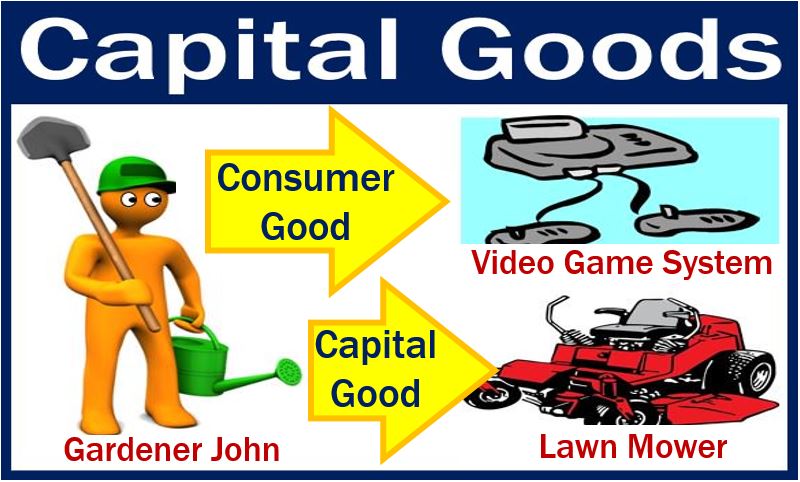What are capital goods? Difference between capital goods and consumer goods
Capital Goods are things that we use in the production of goods and services. They are durable goods. In other words, they last a long time. They do not wear out quickly.
We must not confuse the term with ‘capital,’ which refers to wealth or money.
Capital goods are fixed assets such as machinery, equipment, buildings, vehicles, computers, etc. However, they may also include infrastructure items, such as railway lines, roads, and bridges.
We commonly use the term in a macroeconomic context. Above all, we use it when talking about capital formation and the creation of productive capacity. Macroeconomics refers to the whole economy rather than just parts of it.
To produce goods we need three things: 1. Capital goods. 2. Land. 3. Labor. We call these three components collectively as the primary factors of production.
We use intermediate goods, like capital goods, in the production process. However, intermediate goods are components or ingredients of the final product. In the production of bread, a baker’s oven is a capital good, while salt or flour is an intermediate good. The oven is not an ingredient of bread, but salt is.

Capital goods vs. consumer goods
We classify goods according to how we use them.
A consumer good is a product that consumers use. It has no future productive use. For example, we buy and then consume a chocolate bar. We do not subsequently use it to produce something else. Therefore, chocolate bars are consumer goods.
Put simply, we ‘consume’ consumer goods rather than use them again.
A capital good is anything that we use to make things or increase production. We refer to the most common capital goods as PP&E. PP&E stands for Property, Plant, and Equipment.
A capital good often requires a considerable investment on behalf of the producer. Such investments are typically amortized over the lifespan of the asset, reflecting their long-term value to the business. In accountancy, we refer to the purchase of a capital good is a capital expense.
Britannica.com has the following definition of the term:
“Capital goods are products (such as factory equipment and tools) that are used to make other products.”
Investment in capital goods is often seen as an indicator of an economy’s future productive capacity and potential for growth.
Capital goods – terms and usage
There are many terms in business English related to the concept of capital goods, especially compound nouns. Compound nouns are terms that consist of at least two words. Let’s take a look at some of them, their meanings, and how we can use them in a sentence:
-
Capital Goods Sector
The part of an economy that is involved in the production of goods used in manufacturing and other productive activities.
Example: “The government’s investment in the capital goods sector is expected to boost industrial production.”
-
Capital Goods Production
The process of creating machinery and equipment that are used in the generation of goods and services.
Example: “With the increase in capital goods production, the country is poised to enhance its industrial capabilities.”
-
Capital Goods Investment
The act of dedicating financial resources to acquire capital goods for future production.
Example: “The company’s capital goods investment significantly increased its production capacity over the last quarter.”
-
Capital Goods Market
The marketplace where machinery, equipment, and technology used for production are bought and sold.
Example: “Analysts are predicting a rise in demand within the capital goods market due to the recent technological innovations.”
-
Capital Goods Pricing
The determination of cost for machinery and equipment considered as capital goods.
Example: “Capital goods pricing often reflects the complexity and the technological sophistication of the equipment.”
-
Capital Goods Maintenance
The regular upkeep required to keep capital goods operational and efficient.
Example: “A substantial part of the operating budget is allocated for capital goods maintenance to ensure prolonged service life of the machinery.”
Video – What are Capital Goods?
This educational video, from our sister channel on YouTube – Marketing Business Network, explains what ‘Capital Goods’ means using simple and easy-to-understand language and examples.

